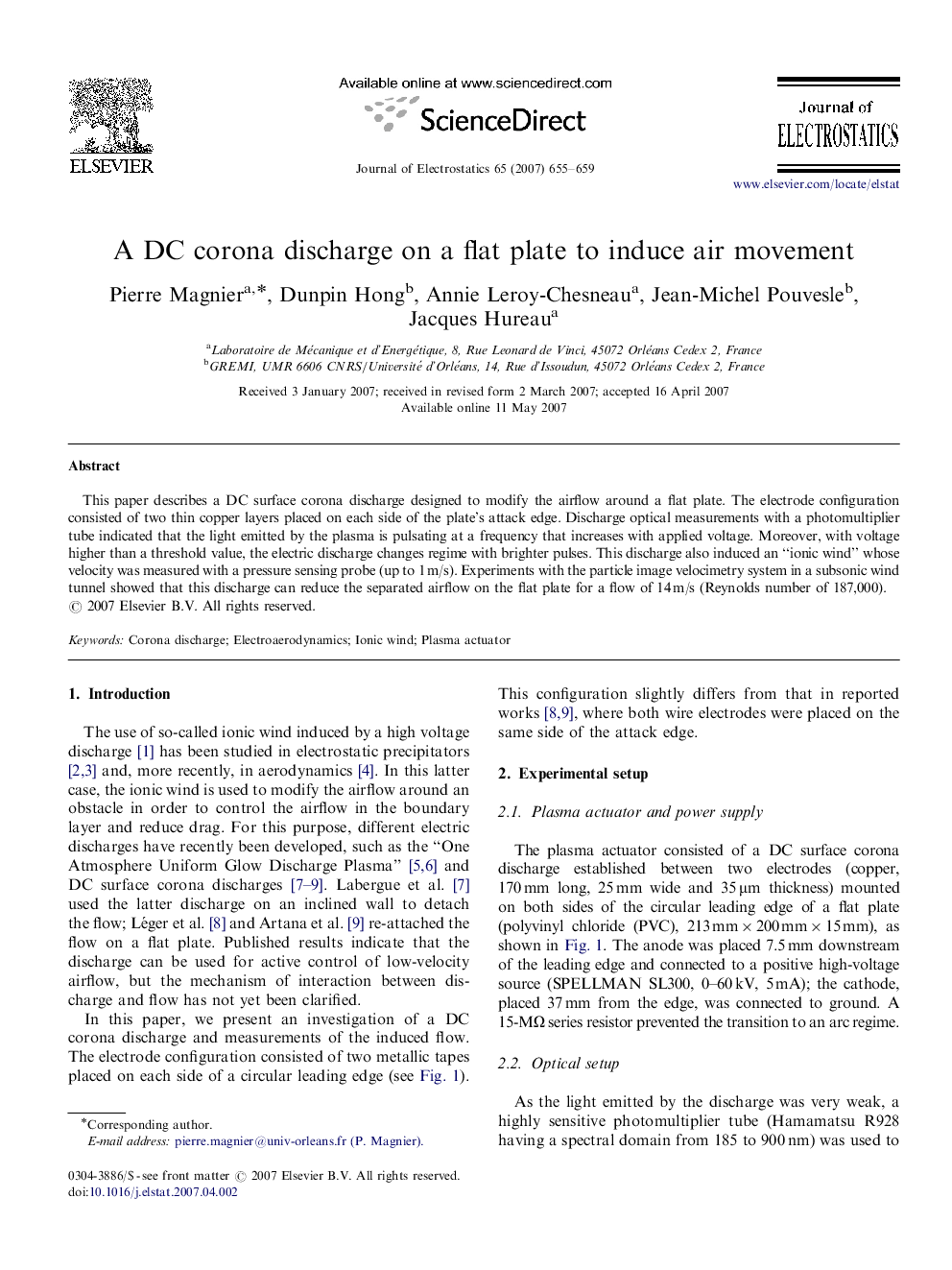| Article ID | Journal | Published Year | Pages | File Type |
|---|---|---|---|---|
| 725817 | Journal of Electrostatics | 2007 | 5 Pages |
This paper describes a DC surface corona discharge designed to modify the airflow around a flat plate. The electrode configuration consisted of two thin copper layers placed on each side of the plate's attack edge. Discharge optical measurements with a photomultiplier tube indicated that the light emitted by the plasma is pulsating at a frequency that increases with applied voltage. Moreover, with voltage higher than a threshold value, the electric discharge changes regime with brighter pulses. This discharge also induced an “ionic wind” whose velocity was measured with a pressure sensing probe (up to 1 m/s). Experiments with the particle image velocimetry system in a subsonic wind tunnel showed that this discharge can reduce the separated airflow on the flat plate for a flow of 14 m/s (Reynolds number of 187,000).
